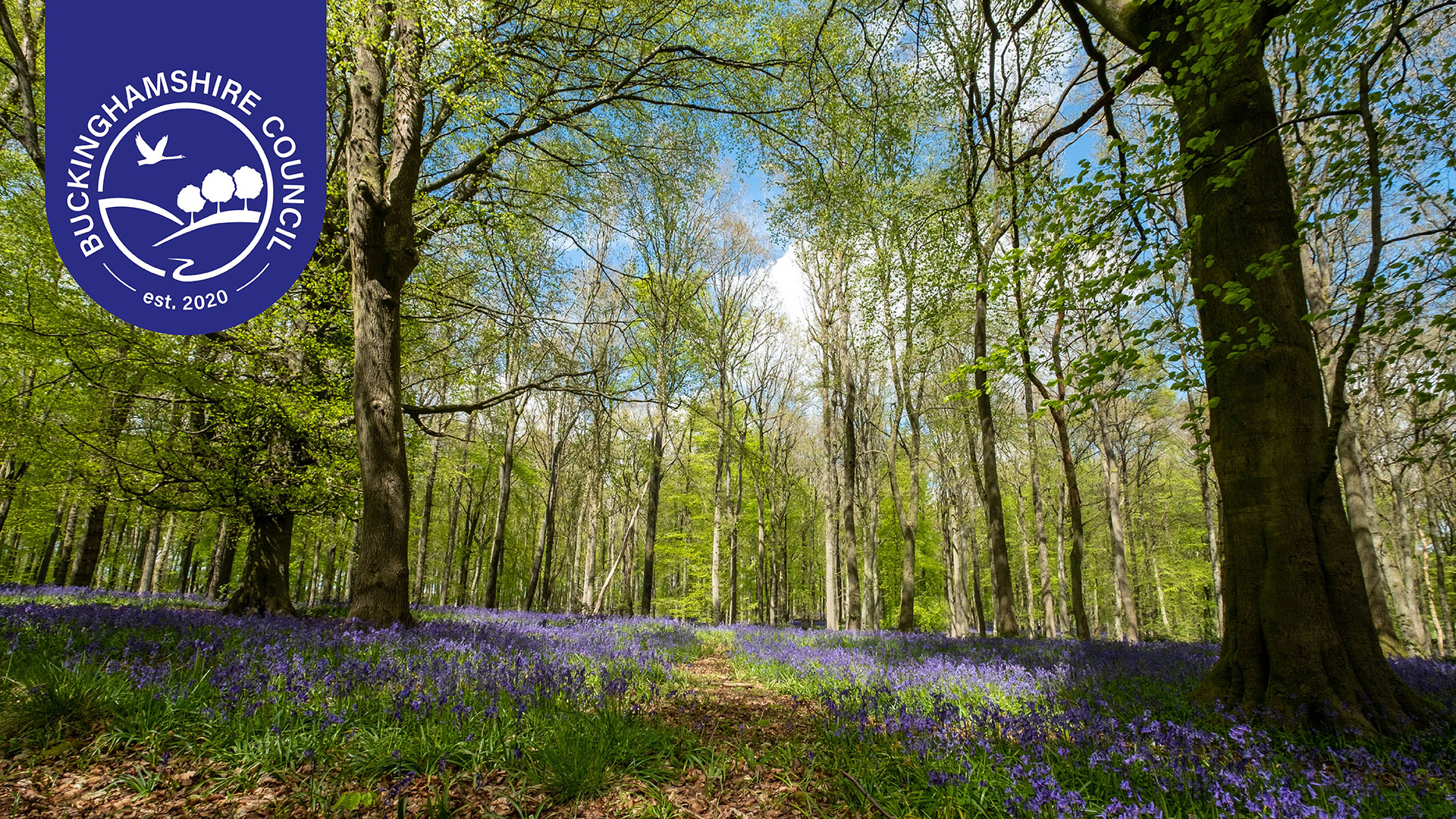Introduction
Buckinghamshire Council are using a Supplementary Planning Document ahead of the development of their new Local Plan to provide guidance to applicants on the local BNG process and information required to be submitted with planning application ahead of mandatory BNG in November 2023 and in support of existing BNG local plan policies.
Background
It was the drive and enthusiasm amongst Buckinghamshire’s Council’s political members, and subsequent emphasis on growth and the environment throughout its corporate agenda, which drove their early introduction of Biodiversity Net Gain (BNG) requirements.
Previously, Buckinghamshire Council embedded a commitment to the environment in its 2020-25 Corporate Plan which emphasised the need to put:
‘green spaces and natural environments at the heart of future development’.
This commitment to the environment as a means to promote economic growth was later specified through the Buckinghamshire Growth Board who commissioned the development of a shared strategic vision for the area. The vision, published in 2022, placed significant emphasis on the need for Buckinghamshire to:
‘Lead on implementing the best practice and policies in environmental protection and enhancement, including the biodiversity net gain scheme’
This led to the development of the early introduction of BNG ahead of mandatory net gain in November 2023. In addition, Buckinghamshire was chosen as one of five DEFRA Local Nature Recovery Strategy (LNRS) pilot areas in 2020-21.
Timeline
The Project
Buckinghamshire Council concentrated on how they could form an ecology team with dedicated BNG officers, collaborate across the Council, how they could integrate BNG within policy development and, how BNG could be linked to their LNRS pilot.
Internal officer restructuring and training:
Buckinghamshire became a Unitary Authority in 2020 which led to a restructuring of the ecology teams into one central unit. A year later, they funded the equivalent of 1.6 FTE BNG officers to aid their preparations for the introduction of BNG.
The restructured ecology team produced an internal guidance note in summer 2022 for planners on dealing with BNG in planning applications and delivered a series of training sessions. The feedback from the training session for planners has been overwhelmingly positive and they have recently received a request for a copy of the training presentation from the floods team. They also collaborated with other teams in the Council setting up a cross departmental BNG working group that meets every month.
Specifically, the ecology team has worked with:
- their legal team to develop Section 106 templates for off-site provision of BNG and a standalone S106 for use with habitat bank providers
- their finance teams on considering the different mechanisms for delivering off-site BNG including production of our own habitat creation financial calculator
- Their estates team, parks and tree planting team in terms of strategically assessing our own landholders for possible BNG sites and supporting production of relevant BNG management plans
- Other teams including the Environmental Records Centre, the flooding team and the Sustainable Drainage Systems team.
Policy development:
Having inserted BNG policies in the emerging local plans prior to becoming a unitary, Buckinghamshire Council then produced a Supplementary Planning Document (SPD) to support the delivery of BNG. The SPD provided additional guidance to both the National Planning Policy Framework and the four legacy local plans on the introduction of BNG requirements. Cabinet approval of the SPD in July 2022 within the new Unitary Authority added greater weight to its BNG requirement and set out clear guidance to support:
- planning applicants to follow the national requirement to ensure their development would result in a biodiversity net gain
- a Buckinghamshire process for achieving biodiversity should net gain not be achievable on their development site
The SPD includes guidance from several sources including CIEEM, the British Standard and details of the DEFRA metric which provides planning and ecological officers in the Council the ability to effectively signpost information on BNG to applicants who may not have submitted applications with a BNG assessment before. It set out a clear BNG process and options that are available.
Since the publication of the SPD further supporting documents and templates have been produced including:
- BNG decision making flow chart and procedure note for DM planners
- BNG S106 template for use with developers
- Interim strategic significance guidance for use with metric
- Habitat bank criteria for use in Buckinghamshire
- S106 agreement for use with habitat bank providers in Buckinghamshire
- Production of BNG unit financial calculator for Bucks i.e. what would it cost to create specific habitats in Bucks including ongoing monitoring, contingency - for use to sense check/evaluate information submitted by developers/habitat bank providers
- Production of BNG monitoring financial calculator i.e. what fees we are charging
- Training sessions run for both development management and planning policy colleagues on SPD and procedure note
- Working with Environmental Records Centre on recording information from local habitat banks
Research and feasibility
Buckinghamshire Council worked very closely with the Buckinghamshire and Milton Keynes Natural Environment Partnership (NEP) in preparation for introducing BNG. A feasibility study, undertaken in January 2019, took a sample of recent planning applications at the time and looked at how BNG and offsetting could work for the county.
Their role as a pilot for the LNRS in 2021 also supported Buckinghamshire Council’s preparation for BNG. For example, the draft LNRS prioritises the development of a habitat bank to deliver nature recovery in Buckinghamshire. It also explicitly identifies that enhanced biodiversity measures will be embedded in the planning system.
Challenges and solutions
Length of time developing the SPD
On reflection, Buckinghamshire Council feel that the process to publishing its SPD took longer than first anticipated - the final version approved by Cabinet is version 20. They stress that BNG is an iterative process involving substantial cross-departmental working within the Council which often takes time.
The delay in publishing the SPD was also partly due to unexpected policy changes. For example, Buckinghamshire and Milton Keynes NEP had completed designing a specific Buckinghamshire metric for applicants to use to measure BNG in 2018. However, in early 2022, the government published its intention to require all Local Authorities to use the DEFRA metric and subsequently, the NEP had to pause the development of their metric. From this they learnt the need for flexibility when developing the SPD to align with national policy and guidance and recommend factoring in a longer development and sign-off process for a BNG SPD.
Justifying the recruitment of new staff
While concerns were raised within the Council on how the new posts could be funded, Buckinghamshire Council decided to take a proactive approach through using reserve monies to recruit the new BNG posts and embed these roles in the long-term financial forecasts for the Council. This was because they recognised that future new burdens funding for the mandatory implementation of BNG together with introduction of local fees for monitoring etc would subsidise or partly pay for these roles in the long term It has also allowed the existing very stretched ecology officer resource to continue to deal with the business-as-usual consultations etc, whilst allowing the BNG officers to concentrate on preparation for BNG.
Outcomes and benefits
As an early adopter of BNG, Buckinghamshire Council have been able to test different approaches and understand what will work best for their authority area when BNG becomes mandatory. They have also fed their learning into developing policy for BNG and LNRS.
Buckinghamshire Council’s early dialogue with planning colleagues allowed them to embed processes and procedures into the development management system knowing that we will need to make adjustments and changes when mandatory BNG comes into force. As a result of their collaboration across the council, Buckinghamshire Council feel that awareness of BNG and technical knowledge is high amongst both officers and members
Local developers are also now used to thinking about BNG requirements in terms of feeding requirements into early design, but also in terms of submitting BNG information and completing the metric.
Having provided local policy clarity we are now proactively working with 6 habitat bank providers to ensure that offset sites are available in Buckinghamshire as early as possible that are available for developers to purchase BNG units from.


